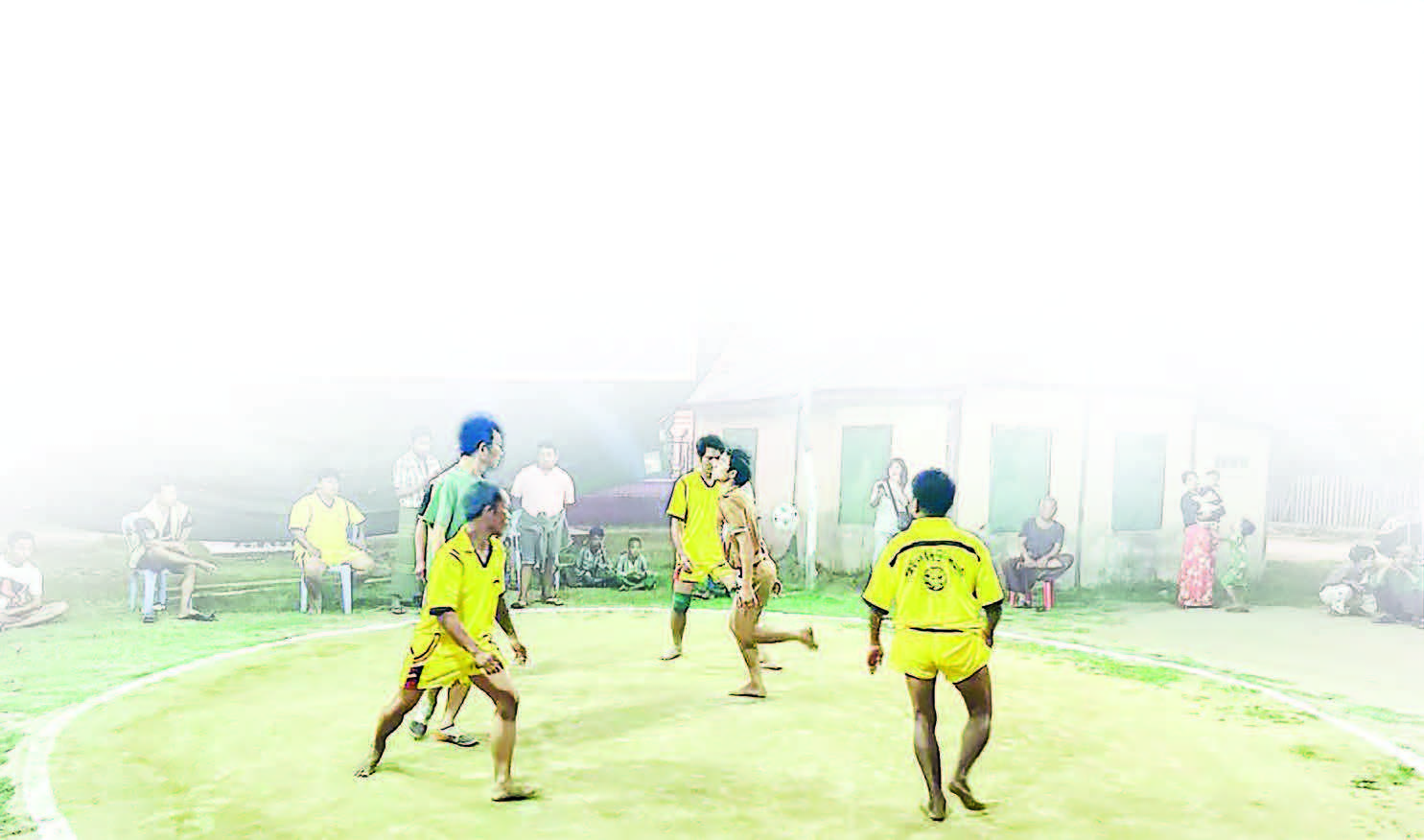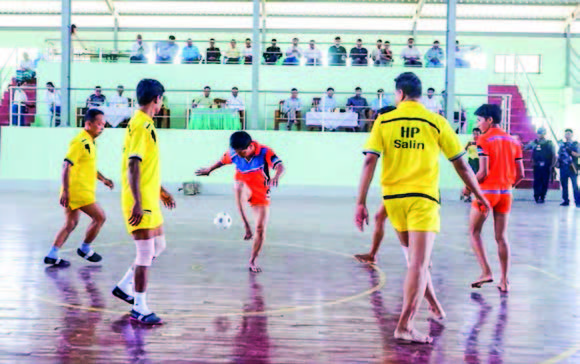MYANMAR people have preserved and passed down the traditional sport Chinlone, or artistic cane ball playing, from generation to generation. In order to keep this tradition alive without fading or disappearing, Chinlone playing demonstrations and competitions are being organized.
Chinlone has been played since ancient times as a form of traditional physical exercise, believed to have originated during the time of ancestors. In Myanmar, the discovery of a Chinlone ball made of silver at the shrine of the Bawbawgyi Pagoda in the ancient city of Sri Ksetra, a city established during the reign of King Duttabaung, shows that the practice of playing Chinlone already existed during that era.
During the reign of King Bagan, a sculptor from Ayutthaya presented a Chinlone carved from ivory to the King. The King was so impressed and pleased with it, and he ordered to craft a similar cane ball and the young men to play it. At that time, only the team style of chinlone, which is called ‘Waing chin’ (a circular group of players kicking the cane ball), was played, and it was believed to promote harmony and mutual understanding among players. Therefore, a motto emerged: ‘Apay Ayu Seik Kyi Pyu Chinmu Saga Hmya Saitta’.
Chinlone or Chin is played in two main styles: ‘Chinthay’ (unlive Chin) and ‘Chinshin’ (live Chin). The style known as Chinthay is also referred to as ‘Nhyat Chin’ (squeezing Chin). In Hnyet Chin, players skilfully control the cane ball using various parts of the body and display their skills using anywhere from one to six Chinlone balls.
The Chinshin style refers to the group-based way of playing Chinlone, where four to five players form a circle and skillfully pass a single ball around without letting it touch the ground. In more recent times, this traditional style has evolved to include a variety of creative techniques such as striking the ball with the elbow, shoulder, or head. Players now perform graceful and culturally refined moves in harmony with the ball’s motion, incorporating actions such as rising, passing, lowering, controlling, blocking, reversing, receiving, exiting, supporting, striking, slicing, delivering, grounding, spinning and so on.
Today, traditional Chinlone techniques include not only basic moves such as using the knee, toe, instep, sole, heel, ankle, and side of the foot but also techniques like using the shoulder, head, back, plain knee, double knee, circular knee and Maha knee, and Salwe (circling body), among others. The performance show of Chinlone is organized in pagoda festivals, school funfairs and sports competitions, and the region, district and township level players compete in 10 kinds of Chingyi (large), 10 kinds of Chinlat (medium) and 10 selected Chin.
The Department of Sports and Physical Education organizes this traditional Chinlone demonstration and competitions annually with several key objectives: to promote the widespread popularity of this graceful traditional sport among the younger generation, to gain international interest and recognition for Myanmar’s traditional Chinlone as a sport originating from Myanmar, to establish it proudly on the global stage, to encourage deep appreciation and value for this traditional Chinlone demonstration and to ensure the preservation of Myanmar’s traditional Chinlone techniques not to fade or disappear over time. — Zeyar Naing (Shwe Kan Myay)/KTZH



